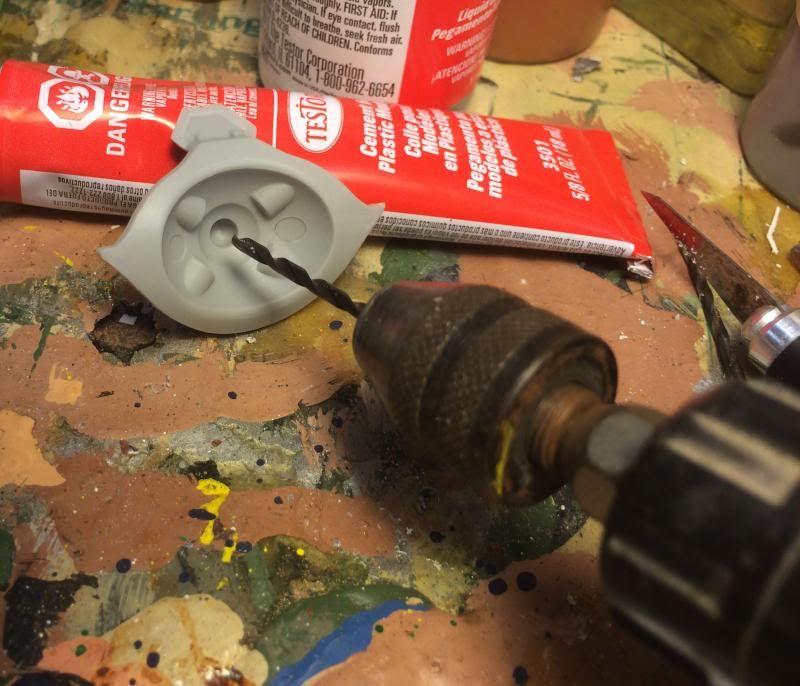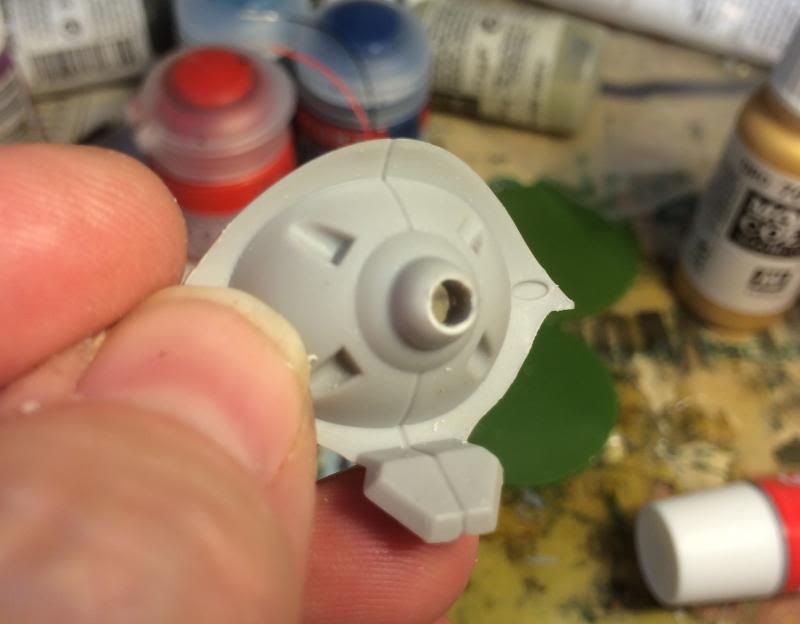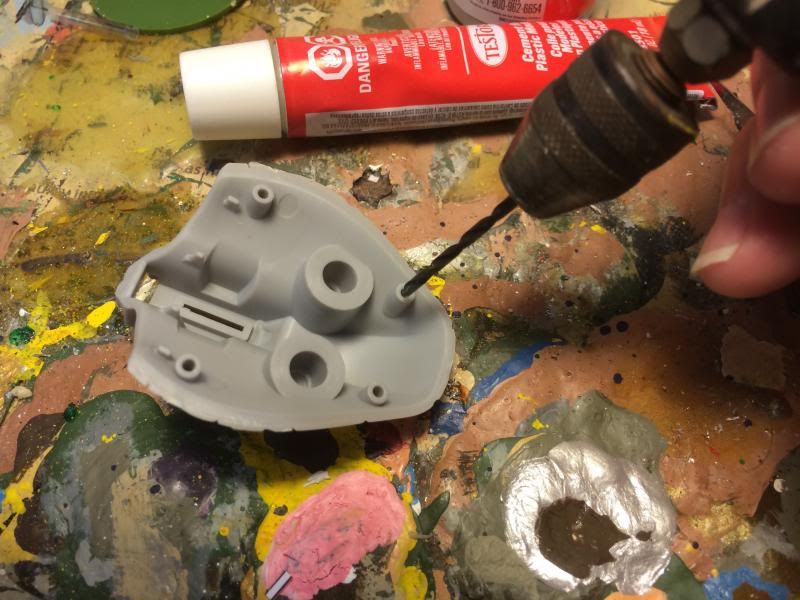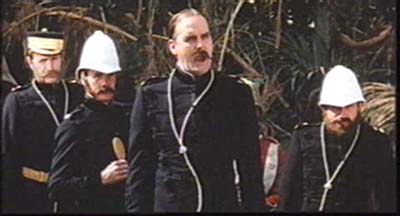Her legacy lives in the former colony of Australia, which became a federated and sovereign country separate from Great Britain on 1 Jan 1901 mere weeks before her death. At that time the citizenship oath was written as loyalty to 'Queen Victoria, her rightful heirs and successors'. The wording of that remains unchanged to this day.
Whats the humdrum about Chaps? Adventures into Victorian Science Fiction and Steampunk with ramblings about Aeronefs, Dirigibles, Land Ironclads, Anarchists, Dinosaur Hunting, Terranefs, Aquanefs, Mad Scientists, and all manner of electric contraptions and steam conveyances. It may not make sense, but there will be claret and a nice cheese board at the end. Tally-Ho and "Vôtre dans une sauce au vin blanc!"
Thursday, 22 January 2015
The Anniversary of the Passing of the Great White Queen
On this day in 1901, her beloved Imperial Majesty, Victoria, Queen of Great Britain, Empress of India and Defender of the Faith passed away. Rest In Peace Victoria et Imperatrix.
Monday, 19 January 2015
The Heat Ray comes to life!
I was looking for this today and thought I had reposted it here - it certainly needs to be so here it is!
Courtesy of the TMP boards and the modelling brilliance of Scott Washburn. Bravo Sir! Bravo!
Here is his post in toto:



A little drilling, a little clean-up and it's ready.

I toyed with the idea of making another hole and poking the button of the switch through the body of the tripod, but I decided I would just leave the top of the head loose and access the button and the battery that way. The pegs in the top of the head fit very tightly into the holes in the lower part of the head. I wanted to loosen that up, but not too much. A little careful drilling did the trick.

After that, it was just a matter of hooking the wires of the LED up to the wires of the switch/battery and stuffing the whole thing into the head of the tripod with the light poking through the hole. Oh, I strongly recommend finishing all your painting before mounting the light!

Courtesy of the TMP boards and the modelling brilliance of Scott Washburn. Bravo Sir! Bravo!
Here is his post in toto:
From the first moment I saw the All Quiet on the Martian Front Tripods I thought they just cried out to have some lights in them. Well, I figured out a way to do it!

How? Well, first, let me tell you that I know as much about electricity as your average 4-year old, so my method had to be very simple! Step one was to find a self-contained power and light kit that would fit inside the head of a tripod. No way was I going to try and have a remote power supply or lights and then try to send wires or fiber optics through the narrow legs of a tripod! A very little searching on-line found exactly what I was looking for:

This beautiful little set includes a battery, battery-holder, switch and LED light for about 5 dollars. The provided light was a bit too small so I got a bigger one for another couple of bucks. It's all available from here: link
Now, how to mount it? Well, the light itself is simple. Just drill a hole of the proper size through the nose of the tripod.

A little drilling, a little clean-up and it's ready.

I toyed with the idea of making another hole and poking the button of the switch through the body of the tripod, but I decided I would just leave the top of the head loose and access the button and the battery that way. The pegs in the top of the head fit very tightly into the holes in the lower part of the head. I wanted to loosen that up, but not too much. A little careful drilling did the trick.

After that, it was just a matter of hooking the wires of the LED up to the wires of the switch/battery and stuffing the whole thing into the head of the tripod with the light poking through the hole. Oh, I strongly recommend finishing all your painting before mounting the light!

And voila!
I have no idea how long the batteries will last, but they are easily replaceable and cheap and I keep them turned off when not in use. Sadly the apparatus is too large to fit in the head of a scout tripod, but I've got a lead on a smaller one.
And no "Rudolph" jokes, please!
Saturday, 10 January 2015
Steam Trek: Where no dapper chaps have gone before
"I say chap. Do beam us aboard your aether flyer, post-haste."
Reposted for everyone's enjoyment from:
http://www.buzzfeed.com/donnad/victorian-star-trek#.wwMKyn2K8b
(Thought one might have thought the clever artist would have at least used a naval uniform for the Captain...)
Then I discovered "Steam Trek" was a bigger thing... enjoy!
http://steam-trek.com
Tuesday, 6 January 2015
General Adrian Carton de Wiart
Its been awhile since we had a "Gentleman of Renown and Infany" (click on tab to see other entries) but I just had to share this fine chap recently featured on the BBC digital project:
Lieutenant General Sir Adrian Carton de Wiart, VC, KBE, CB, CMG, DSO

 Carton de Wiart (far right) with Winston Churchill in 1943
Carton de Wiart (far right) with Winston Churchill in 1943

In his own words

 Remains of trenches in Devil's Wood, where Carton de Wiart was shot through the head
Remains of trenches in Devil's Wood, where Carton de Wiart was shot through the head

Lieutenant General Sir Adrian Carton de Wiart, VC, KBE, CB, CMG, DSO

Sir Adrian Carton de Wiart was a one-eyed, one-handed war hero who fought in three major conflicts across six decades, surviving plane crashes and PoW camps. His story is like something out of a Boy's Own comic.
Carton de Wiart served in the Boer War, World War One and World War Two. In the process he was shot in the face, losing his left eye, and was also shot through the skull, hip, leg, ankle and ear.
In WW1 he was severely wounded on eight occasions and mentioned in despatches six times.
Having previously lost an eye and a hand in battle, Carton de Wiart, as commanding officer, was seen by his men pulling the pins of grenades out with his teeth and hurling them with his one good arm during the Battle of the Somme, winning the Victoria Cross.
WW1 historian Dr Timothy Bowman believes Carton de Wiart's example helps debunk some myths.
"His story serves to remind us that not all British generals of WW1 were 'Chateau Generals' as portrayed in Blackadder. He exhibited heroism of the highest order.
"Evelyn Waugh supposedly used Carton de Wiart as the model for his fire-eating fictional creation, Brigadier Ritchie Hook, but Waugh's fictional creation experienced considerably fewer adventures than his real life counterpart."
It says much for Carton de Wiart's character that despite being one of the most battle-scarred soldiers in the history of the British Army, he wrote in his autobiography: "Frankly, I had enjoyed the war."
He was born into an aristocratic family in Brussels on 5 May 1880. In 1891 he was sent to boarding school in England, going on to study law at Oxford.
In 1899 he saw the opportunity to experience his first taste of war. Abandoning his studies, he left for South Africa to serve as a trooper in the British Army during the second Boer War. As he was under military age, wasn't a British subject and didn't have his father's consent, he pretended to be 25 and signed up under a pseudonym.
 Carton de Wiart (far right) with Winston Churchill in 1943
Carton de Wiart (far right) with Winston Churchill in 1943
It was a baptism of fire which ended with him receiving bullet wounds to the stomach and groin, necessitating a return to England. Although eager to get back in the mix again, he had to wait more than a decade to experience further front-line action.
At the outbreak of WW1 in November 1914, Carton de Wiart, now naturalised as a British subject, was serving with the Somaliland Camel Corps, fighting the forces of the Dervish state.
During an attack on an enemy stronghold, he was shot in the arm and in the face, losing his left eye and part of his ear. He received the Distinguished Service Order (DSO) for his exploits.
Speaking in 1964 Lord Ismay, who served alongside Carton de Wiart in Somaliland, described the incident:
"He didn't check his stride but I think the bullet stung him up as his language was awful. The doctor could do nothing for his eye, but we had to keep him with us. He must have been in agony."
Lord Ismay also gave an insight into Carton de Wiart's innate love of fighting:
"I honestly believe that he regarded the loss of an eye as a blessing as it allowed him to get out of Somaliland to Europe where he thought the real action was."
He returned to England to recover in a nursing home in Park Lane. He was to return to this same place on each subsequent occasion he was injured. This became such a regular occurrence that they kept his own pyjamas ready for his next visit.
While recuperating from these injuries, Carton de Wiart received a glass eye. It caused him such discomfort that he allegedly threw it from a taxi and instead acquired a black eye patch.
Carton de Wiart was painted by Sir William Newenham Montague Orpen
Such setbacks were not to delay him long. He soon realised his ambition to fight on the Western Front when he was sent to Ypres in May 1915.
During the Second Battle of Ypres, the Germans launched an artillery barrage in which Carton de Wiart's left hand was shattered. According to his autobiography, Happy Odyssey, he tore off two fingers when the doctor refused to amputate them. His hand was removed by a surgeon later that year.

After a period of recovery, Carton de Wiart once more managed to convince a medical board he was fit for battle. In 1916, he took command of the 8th Battalion, Gloucestershire Regiment, and while commanding them at the Somme his legend was cemented.
He electrified his men. The eye patch, empty sleeve and striking moustache, combined with his bravery, made him famous, with men under his command describing his presence as helping to alleviate their fear before going over the top.
During fierce fighting, the battle for the village of La Boiselle swayed back and forth. When three other commanding officers were killed, Carton de Wiart took charge of all units fighting in the village and led from the front, holding off enemy counterattacks.
He received the Victoria Cross, the highest British military award for gallantry, for his actions at La Boiselle. He, however, declined to even mention the medal in his autobiography, later telling a friend that "it had been won by the 8th Glosters, for every man has done as much as I have".
In his own words

- "Governments may think and say as they like, but force cannot be eliminated, and it is the only real and unanswerable power. We are told that the pen is mightier than the sword, but I know which of these weapons I would choose"
- "Frankly, I enjoyed the war [World War One]"
- "At that moment, I knew once and for all that war was in my blood. If the British didn't fancy me, I would offer myself to the Boers"
He took part in a number of other offensives during the war, picking up more injuries. Mr A Holmes, who served as Carton de Wiart's "batman" or personal servant, told the 1964 BBC Home Service programme, In Our Time, how his commanding officer had a particularly lucky escape during another Somme offensive.
"They shifted us from Ypres then back on the Somme again to the Devil's Wood, and that's where the old man got shot through the back of the head. But fortunately it missed his spinal cord."
Some historians have contended that Carton de Wiart's bravery at times bordered on recklessness, and that this may have explained his being passed over for promotion to divisional command in WW1.
But Bowman believes there were mitigating factors. "He was a brave soldier and effective leader of men. He was well qualified to hold divisional command, but so were many others, and his habit of turning up in the front line and getting himself injured didn't bode well for his ability to manage a division.
 Remains of trenches in Devil's Wood, where Carton de Wiart was shot through the head
Remains of trenches in Devil's Wood, where Carton de Wiart was shot through the head
"Given the primitive communications of the time, and the amount of bureaucracy involved, commanding a division in WW1 did involve a lot of office time, which didn't seem to be his forte."
Carton de Wiart lived in Poland for most of the inter-war period but his military career was not yet over. When World War Two broke out, he led a campaign in Norway in 1940 and was briefly stationed in Northern Ireland.
In April 1941 he was dispatched to form a British military mission in Yugoslavia, but his aircraft was shot down over the Mediterranean. After swimming to shore, he was captured by the Italians. Despite being in his 60s, he made numerous attempts to escape the PoW camp, on one occasion eluding recapture for eight days - quite a feat given his distinctive appearance and lack of Italian.
He was eventually released over two years later and was then sent to China by Winston Churchill to be his personal representative to Nationalist leader Chiang Kai-shek, a post he held until 1946.
Churchill was a firm admirer of Carton de Wiart, describing him as "a model of chivalry and honour" and writing the foreword to his autobiography.
In retirement, he eventually settled in County Cork, spending his time fishing. Having proved indestructible on the battlefield, he died peacefully in 1963, aged 83.
Military historian Lt Col James Cook, of the Royal Artillery, believes his example continues to resonate today.
"Carton de Wiart did have a habit of getting injured but this is simply testament to his belief of leading from the front. He inspired his men with the simple and eternal words, 'follow me'. These words remain the mark of a truly courageous leader, be it on the Western Front a hundred years ago, or today in military operations around the world."
Impressive array of medals

Carton De Wiart was awarded the Victoria Cross for actions at La Boiselle. The Times newspaper carried the following notice on September 11, 1916.
"For the most conspicuous bravery, coolness and determination during severe operations of a prolonged nature. It was owing in a great measure to his dauntless courage and inspiring example that a serious reverse was averted. He displayed the utmost energy and courage in forcing our attack home. After three other battalion commanders had become casualties, he controlled their commands, and ensured that the ground won was maintained at all costs. He frequently exposed himself in the organization of positions and of supplies, passing unflinchingly through fire barrage of the most intense nature. His gallantry was inspiring to all."
From the BBC Digital Archives here
Read more about him here:
http://www.badassoftheweek.com/index.cgi?id=30045813384
Read more about him here:
http://www.badassoftheweek.com/index.cgi?id=30045813384
Subscribe to:
Comments (Atom)

An exploration of debauchery, vice and other reasons to be a man!









